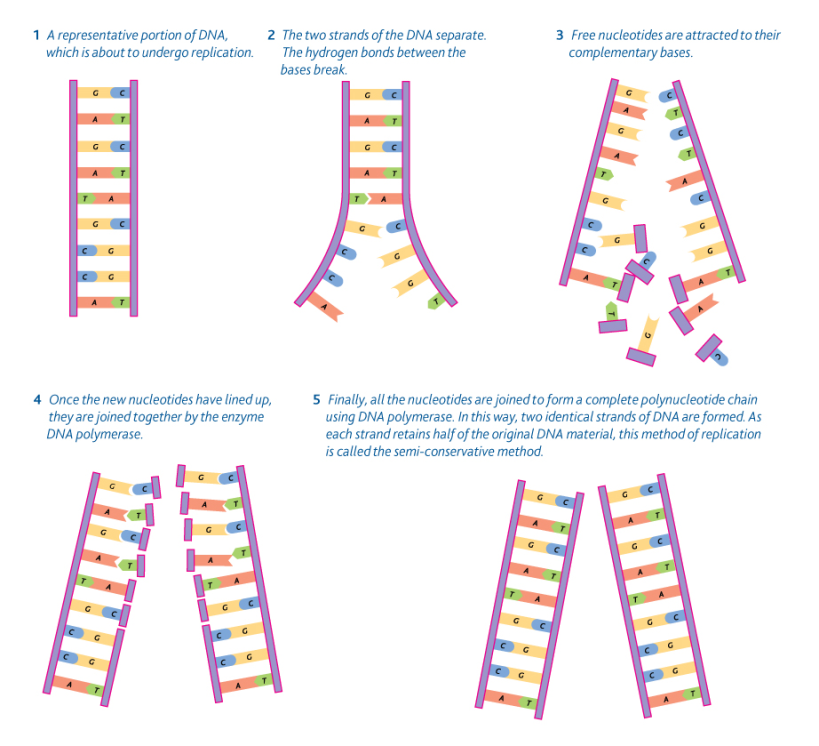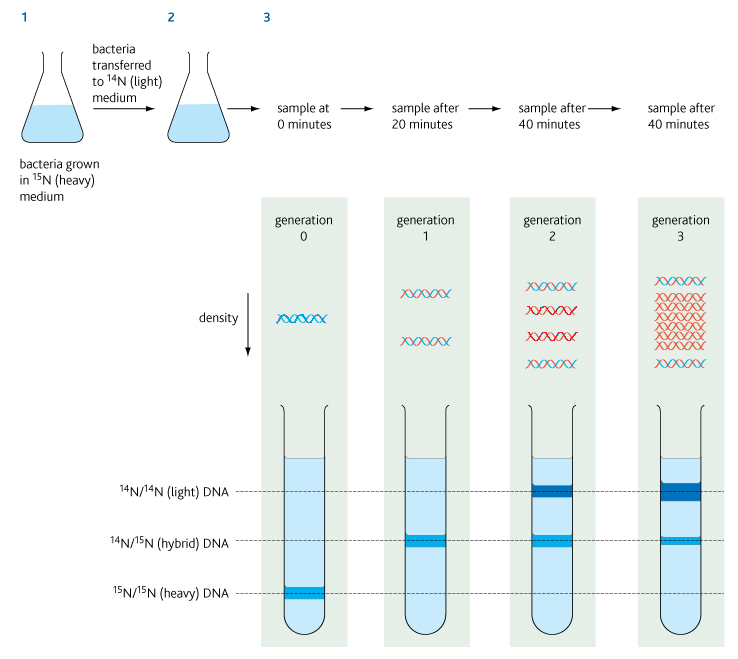Whenever a cell divides, the DNA in it needs to copy itself accurately. It does this via the semi-conservative method of DNA replication. This means that half (semi) of each new DNA strand that is made is made of some of the old DNA (so the old DNA is conserved).
- A piece of DNA
- The hydrogen bonds between the bases of the 2 strands of DNA break, causing the DNA strands to become separate.
- Free nucleotides pair with their complementary base forming new hydrogen bonds between the bases.
- The nucleotides on the new strand then have to be joined to form sugar-phosphate backbone. This involves them joining together in a condensation reaction. DNA polymerase ables this all to happen.
Evidence for the semi-conservative method of DNA replication
You need to be able to evaluate and explain the following experiment:
- Generation 0 is grown in the heavy (15N) Nitrogen. This is represented by the blue strands.
- It is then moved to a mixture of light (14N) Nitrogen – red strand. Now when the DNA replicates the new strand will be contain the 14N. This means that the old strand contains 15N and the new strand contains 14N.
- The next two generations are both kept in light (14N) nitrogen and so as more DNA replicates, the new strands are all made of 14N – the red strands.



Pingback: The replication of DNA | The Journalist